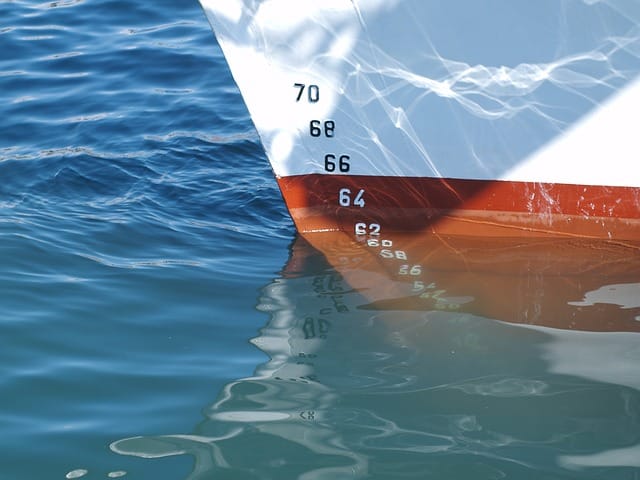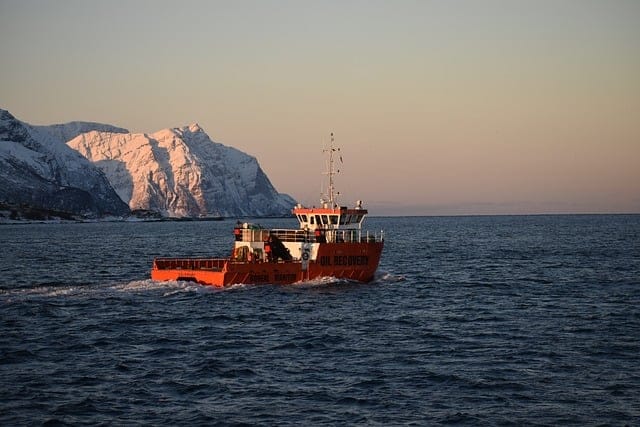Sea level rise is one of the most pressing consequences of climate change, and its effects are being felt across the globe. Coastal cities, ecosystems, and economies are under threat as ocean levels rise due to melting ice sheets, glaciers, and the thermal expansion of seawater. Understanding the causes and implications of sea level rise is critical to developing strategies to mitigate its effects and adapt to a changing world.
What is Sea Level Rise?
Defining Sea Level Rise
Sea level rise refers to the increase in the average height of the world’s oceans. This phenomenon is primarily driven by two factors linked to climate change: the melting of polar ice sheets and glaciers, and the expansion of seawater as it warms. Together, these processes contribute to a gradual increase in ocean levels, which can lead to coastal erosion, flooding, and the displacement of human and animal populations.
Why Sea Level Rise Matters
The significance of sea level rise cannot be overstated. As ocean levels rise, coastal areas—where millions of people live and where critical infrastructure is located—face increased risk of inundation. Low-lying islands are particularly vulnerable, with some even facing the possibility of disappearing entirely. Additionally, sea level rise threatens vital ecosystems like wetlands and mangroves, which provide critical buffers against storm surges and serve as habitats for various species.
Causes of Sea Level Rise
Melting of Ice Sheets and Glaciers
One of the primary drivers of sea level rise is the melting of ice sheets in Greenland and Antarctica, along with the retreat of glaciers in mountainous regions. As global temperatures increase due to human-induced climate change, these ice reserves are shrinking at an alarming rate. The meltwater from these sources directly contributes to rising sea levels.
The Role of the Greenland Ice Sheet
The Greenland Ice Sheet contains enough frozen water to raise global sea levels by more than 7 meters if it were to melt entirely. Currently, this ice sheet is losing mass at a rate that has accelerated in recent decades, contributing significantly to sea level rise.
Antarctica’s Contribution
Similarly, Antarctica holds vast amounts of ice, and while the region’s interior remains relatively stable, its coastal ice shelves are retreating and collapsing. These events add substantial volumes of water to the oceans, further exacerbating sea level rise.
Thermal Expansion of Seawater
In addition to ice melt, sea level rise is also driven by the thermal expansion of seawater. As the planet warms, so do the oceans, causing the water to expand. Even a small increase in temperature can lead to significant increases in sea levels because of the vast volume of the world’s oceans. This process accounts for a significant portion of the observed sea level rise over the past century.
The Global Impact of Sea Level Rise
Sea Level Rise and Coastal Cities
Some of the most immediate and severe impacts of sea level rise are being felt in coastal cities around the world. Cities like New York, Miami, Mumbai, and Jakarta are facing increasing challenges from rising tides, which lead to more frequent and severe flooding. The combination of higher sea levels and more intense storm surges during extreme weather events is putting billions of dollars’ worth of infrastructure at risk and displacing millions of people.
Miami: A City on the Frontline
Miami, Florida, is one of the most vulnerable cities to sea level rise in the United States. Already experiencing frequent “sunny day” flooding, Miami faces an existential threat as sea levels continue to rise. The city is investing in costly infrastructure projects, including raising streets and installing pumps, but these measures may only provide temporary relief.
Jakarta: The Sinking City
Jakarta, Indonesia, faces a dual threat of sea level rise and subsidence, where the land is sinking due to groundwater extraction. This has caused parts of the city to sink faster than sea levels are rising, leading to chronic flooding. The Indonesian government has even proposed relocating the capital to a new location to escape the long-term effects of sea level rise.
Impacts on Small Island Nations
For small island nations in the Pacific and Indian Oceans, sea level rise represents an existential threat. Countries like the Maldives, Kiribati, and Tuvalu are at risk of losing significant portions of their land, with some islands potentially becoming uninhabitable in the near future. These nations have been vocal advocates for global climate action, as they are already experiencing the severe consequences of rising seas.
Kiribati: Preparing for the Worst
Kiribati, a Pacific island nation, is preparing for the possibility that rising seas will make the entire country uninhabitable. The government has purchased land in Fiji as a potential relocation site for its citizens, demonstrating the extreme measures that some nations are considering in response to sea level rise.
Ecosystem Disruption and Biodiversity Loss
Sea level rise also poses a significant threat to coastal ecosystems, particularly wetlands, mangroves, and coral reefs. These ecosystems provide crucial services, such as protecting shorelines from erosion, filtering pollutants, and serving as habitats for diverse species. As sea levels rise, these habitats are being submerged, eroded, or transformed, leading to biodiversity loss and the degradation of ecosystem services.
Mangroves: Natural Buffers Under Threat
Mangrove forests play a critical role in protecting coastal areas from storm surges and erosion, while also providing habitats for marine life. However, sea level rise is causing mangroves to retreat inland, where they often face barriers such as urban development or agricultural land. This loss of mangrove forests leaves coastal areas more vulnerable to flooding and storm damage.
Coral Reefs: Sensitive to Rising Seas
Coral reefs are already under threat from ocean acidification and warming waters, but sea level rise poses an additional challenge. As sea levels rise, the depth at which corals grow changes, potentially limiting the sunlight they receive and affecting their growth. The loss of coral reefs would have devastating effects on marine biodiversity and the economies of countries that rely on them for tourism and fisheries.
Mitigating and Adapting to Sea Level Rise
Global Efforts to Reduce Greenhouse Gas Emissions
The most effective long-term solution to sea level rise is reducing the greenhouse gas emissions that are driving global warming. The Paris Agreement, signed by nearly every nation, aims to limit global temperature rise to well below 2°C above pre-industrial levels, with efforts to limit the increase to 1.5°C. Achieving these targets is critical to slowing the rate of sea level rise and minimizing its impacts.
Renewable Energy and Climate Policies
Transitioning to renewable energy sources, such as solar and wind power, is essential for reducing carbon emissions and mitigating climate change. Additionally, governments around the world are implementing policies aimed at reducing emissions, such as carbon pricing, vehicle emissions standards, and incentives for energy efficiency. These measures are critical for slowing the pace of sea level rise and protecting vulnerable populations.
Coastal Adaptation Strategies
While reducing emissions is crucial, sea level rise is already happening, and many communities must adapt to its impacts. Coastal adaptation strategies include building seawalls, restoring wetlands, and elevating infrastructure. These measures can help reduce the risk of flooding and erosion in the short term, but they may not be sufficient to address the long-term challenges posed by rising seas.
Building Seawalls and Storm Barriers
Seawalls and storm barriers are commonly used to protect coastal cities from the effects of sea level rise. For example, the Netherlands has long been a pioneer in managing water through its system of dikes and flood barriers. However, these solutions can be expensive and may not be feasible for all regions, particularly low-income countries.
Restoring Wetlands and Natural Defenses
In many areas, restoring natural defenses like wetlands and mangroves is a more sustainable approach to addressing sea level rise. These ecosystems can absorb floodwaters, reduce wave energy, and provide critical habitat for wildlife. Wetland restoration projects are gaining popularity as an adaptation strategy because they offer both environmental and protective benefits.
Managed Retreat: A Difficult Decision
In some cases, the most viable long-term response to sea level rise is managed retreat—relocating communities away from vulnerable coastal areas. While this is a challenging and often contentious solution, it may be necessary in areas where other adaptation strategies are insufficient or too costly.
The Case of Newtok, Alaska
Newtok, a village in Alaska, is one of the first U.S. communities to relocate due to sea level rise and coastal erosion. As permafrost melts and sea levels rise, the village’s land is rapidly eroding, forcing residents to move to a new, safer location. This process, though difficult and costly, is an example of how some communities are already responding to the inevitable impacts of sea level rise.
The Future of Sea Level Rise: Projections and Uncertainty
Sea Level Rise Projections for the 21st Century
Projections for sea level rise over the next century vary depending on the rate of greenhouse gas emissions and the degree of warming. The Intergovernmental Panel on Climate Change (IPCC) projects that sea levels could rise between 0.3 to 1 meter by 2100, with the possibility of even higher rises if ice sheets in Greenland and Antarctica melt more rapidly than expected.
Worst-Case Scenarios
In worst-case scenarios, where global warming reaches or exceeds 4°C above pre-industrial levels, sea level rise could exceed 2 meters by the end of the century. Such a scenario would have catastrophic implications for coastal communities and global economies, displacing hundreds of millions of people and causing trillions of dollars in damage.
Uncertainty in Ice Sheet Behavior
One of the greatest uncertainties in sea level rise projections is the behavior of ice sheets, particularly in Antarctica. Scientists are still working to understand the complex dynamics of ice sheet collapse and how quickly these massive ice reserves could melt. This uncertainty makes it challenging to predict exactly how much and how quickly sea levels will rise in the coming decades.
Conclusion: Preparing for a Rising Tide
Sea level rise is an inevitable consequence of climate change, and its impacts are already being felt around the world. From coastal cities to small island nations, the rising tide is threatening homes, ecosystems, and economies. While global efforts to reduce emissions are essential to slowing the rate of sea level rise, adaptation strategies will be necessary to protect vulnerable communities and preserve vital ecosystems. As we look to the future, continued research, innovation, and international cooperation will be key to managing the challenges posed by sea level rise.






